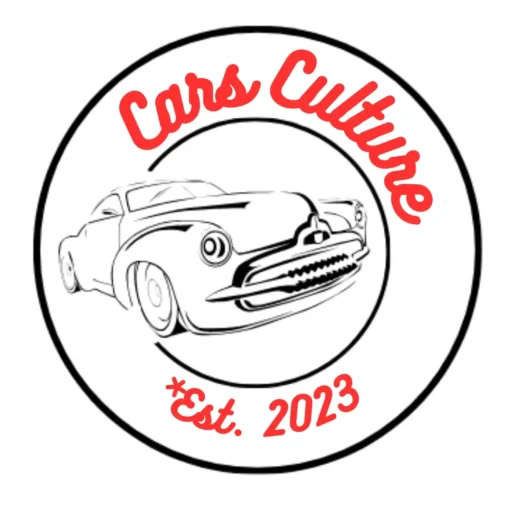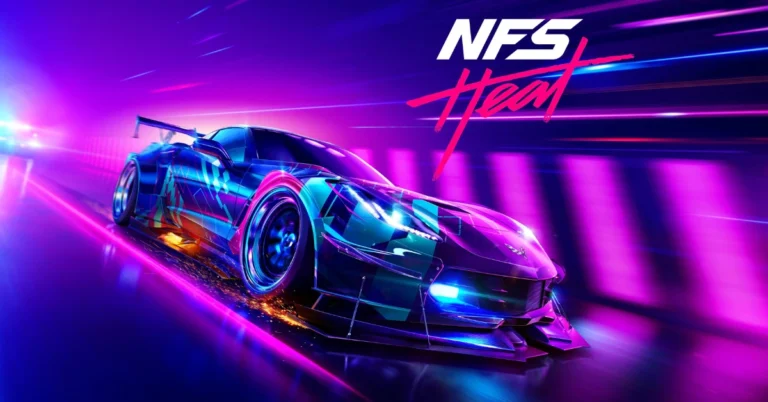If you’re a car enthusiast like us, then you know that cars aren’t just a means of transportation. They’re an extension of our personality, a reflection of our style, and a statement about who we are. And when it comes to making a statement, there’s nothing quite like aesthetic cars.
Aesthetic cars are more than just beautiful vehicles. They’re works of art on wheels, designed to turn heads and evoke emotions. From classic cars like the 1962 Ferrari 250 GTO to modern masterpieces like the 2019 Ferrari Monza SP1, these cars are the epitome of style and sophistication.
Whether you’re a fan of sleek lines, bold colors, or intricate details, there’s an aesthetic car out there for everyone. And in this article, we’ll take a closer look at some of the most beautiful cars in the world, explore the latest trends in car aesthetics, and provide tips on how to make your own car stand out from the crowd. So buckle up and get ready to indulge in the world of aesthetic cars.
History of Aesthetic Cars
As car enthusiasts, we often marvel at the beauty and elegance of cars. But have you ever wondered about the history of aesthetic cars? In this section, we will take a brief look at the evolution of aesthetic cars, from vintage to modern.
Vintage Aesthetic Cars

The early 20th century saw the birth of the automobile industry, and with it came the first aesthetic cars. These cars were characterized by their elegant curves, intricate details, and luxurious features. Some of the most iconic vintage aesthetic cars include:
- 1935 Auburn 851 Speedster: With its long hood, sweeping fenders, and low-slung profile, the Auburn 851 Speedster was a true masterpiece of design.
- 1937 Cord 812: The Cord 812 was famous for its “coffin nose” front grille and sleek, aerodynamic body.
- 1939 Bugatti Type 57C: The Bugatti Type 57C was a true work of art, with its flowing lines, sculpted fenders, and exquisite details.
Modern Aesthetic Cars

In the post-World War II era, car design underwent a radical transformation. Cars became more streamlined, angular, and futuristic, reflecting the spirit of the times. Some of the most iconic modern aesthetic cars include:
- 1961 Jaguar E-Type: The Jaguar E-Type was a true icon of the 1960s, with its long, sleek body, curvaceous lines, and powerful engine.
- 1966 Lamborghini Miura: The Lamborghini Miura was a game-changer in the world of supercars, with its mid-engine layout, low-slung profile, and aggressive styling.
- 2005 Ford GT: The Ford GT was a modern-day homage to the classic GT40, with its muscular lines, aerodynamic body, and powerful engine.
As you can see, aesthetic cars have come a long way since their inception. From vintage masterpieces to modern-day marvels, these cars continue to captivate us with their beauty and elegance.
Characteristics of Aesthetic Cars

When it comes to aesthetic cars, there are certain characteristics that make them stand out from the rest. These characteristics include design elements, color schemes, and branding and logos. Let’s take a closer look at each of these characteristics.
Design Elements
Design elements are perhaps the most important characteristic of an aesthetic car. These elements include the overall shape of the car, the placement of the windows and doors, and the size and shape of the wheels. Aesthetic cars often have sleek, aerodynamic designs that are both visually appealing and functional. They may also feature unique design elements such as gull-wing doors or retractable hardtops.
Color Schemes
Color schemes are another important characteristic of aesthetic cars. Aesthetic cars often feature bold, eye-catching colors that help them stand out from the crowd. Common colors for aesthetic cars include red, yellow, and blue, but other colors such as green and purple may also be used. In addition to the base color of the car, aesthetic cars may also feature contrasting colors for accents such as the wheels, mirrors, or trim.
Branding and Logos
Finally, branding and logos are an important characteristic of aesthetic cars. Luxury car brands such as Ferrari, Lamborghini, and Aston Martin are often associated with aesthetic cars due to their sleek designs and high-performance capabilities. These brands often feature their logos prominently on the car, either as a badge on the grille or as an emblem on the hood or trunk. In addition to the brand logo, aesthetic cars may also feature custom logos or designs that are unique to the car.
In summary, aesthetic cars are characterized by their sleek, aerodynamic designs, bold color schemes, and prominent branding and logos. These characteristics work together to create a car that is both visually appealing and high-performing.
Notable Aesthetic Car Models

When it comes to aesthetic cars, there are certain models that stand out from the rest. These cars have a timeless beauty that has captured the hearts of car enthusiasts for generations. Here are some of the most notable aesthetic car models:
Ferrari 250 GTO
The Ferrari 250 GTO is often considered the most beautiful car ever made. With its sleek lines and powerful engine, it’s easy to see why. Only 39 of these cars were ever made, making them extremely rare and valuable. In fact, a 1962 Ferrari 250 GTO sold for a record-breaking $48.4 million in 2018.
Jaguar E-Type
The Jaguar E-Type is another iconic car that is known for its beauty. It was first introduced in 1961 and quickly became a favorite among car enthusiasts. Its long, flowing lines and powerful engine make it a true classic.
Lamborghini Miura
The Lamborghini Miura is often credited with starting the supercar craze. It was first introduced in 1966 and was the fastest production car of its time. Its aggressive styling and powerful engine make it a true masterpiece.
Porsche 911
The Porsche 911 is another classic car that has stood the test of time. It was first introduced in 1963 and has been in production ever since. Its timeless design and excellent performance make it a favorite among car enthusiasts.
Aston Martin DB5
The Aston Martin DB5 is perhaps best known for its appearance in the James Bond films. However, it’s also a beautiful car in its own right. Its sleek lines and powerful engine make it a true classic.
These are just a few of the most notable aesthetic car models. Each one has its own unique beauty and charm that has captivated car enthusiasts for generations.
Future of Aesthetic Cars
As car enthusiasts, we are always excited about the latest advancements in car technology and design. With the rapid pace of technological advancements, the future of aesthetic cars looks promising. In this section, we will discuss the technological advancements and trends in car aesthetics that are shaping the future of cars.
Technological Advancements
The future of cars is all about technology, and this is evident in the latest car designs. With the rise of electric cars, we are seeing new technologies that are changing the way cars are designed. For example, electric cars are designed to be more aerodynamic, with smoother lines and fewer sharp edges. This is because aerodynamics are crucial for electric cars to achieve maximum range.
Another technological advancement that is shaping the future of cars is the use of lightweight materials. Lightweight materials such as carbon fiber and aluminum are being used to reduce the weight of cars, which in turn improves their performance and fuel efficiency. This is particularly important for electric cars, which need to be lightweight to maximize their range.
Trends in Car Aesthetics
Car aesthetics are constantly evolving, and we are seeing new trends emerge every year. One trend that is becoming increasingly popular is the use of bold colors. Car manufacturers are experimenting with bright and bold colors to make their cars stand out on the road. This trend is particularly evident in electric cars, which are often designed to be eye-catching and futuristic.
Another trend that is shaping the future of car aesthetics is the use of minimalist designs. Car manufacturers are embracing the less is more philosophy, with simple and clean designs that are free from clutter. This trend is evident in the latest electric cars, which often have a sleek and minimalist design.
In conclusion, the future of aesthetic cars looks bright, with new technological advancements and design trends that are shaping the way cars are designed and built. As car enthusiasts, we can look forward to a future of sleek and stylish cars that are also environmentally friendly and efficient.
Our Thoughts on Aesthetic Cars
As car enthusiasts, we can’t help but appreciate the beauty of a well-designed car. Aesthetic cars are not just a means of transportation, but they are also a work of art. From the sleek lines to the curves and contours of the body, every aspect of a car’s design contributes to its overall aesthetic appeal.
One thing we have noticed is that the most aesthetically pleasing cars tend to be those that have a timeless design. These cars are not just beautiful in their era, but they remain beautiful even years later. Take, for example, the 1962 Ferrari 250 GTO, which is still considered one of the most beautiful cars in the world.
However, we also understand that beauty is subjective, and what one person finds aesthetically pleasing might not be the same for someone else. That being said, we believe that there are certain design elements that contribute to a car’s overall aesthetic appeal. These include:
- Proportions: A well-proportioned car is visually pleasing to the eye. The size of the wheels, the length of the hood, and the overall dimensions of the car all play a role in its proportions.
- Lines and Curves: The lines and curves of a car’s body can make or break its aesthetic appeal. A car with too many sharp angles can look harsh, while a car with too many curves can look soft. The key is to find the right balance between the two.
- Color: The color of a car can also contribute to its overall aesthetic appeal. A bright, eye-catching color can make a car stand out, while a more subdued color can give it a more sophisticated look.
FAQ
What does aesthetic mean for a car?
The car aesthetic designer oversees the vehicle’s overall design, ensuring not only its visual appeal but also its functionality and user-friendliness once assembled.
Which car is most beautiful in the world?
Examples of the most aesthetic cars:
– Lamborghini Miura
– Porsche 911
– Citroën DS
– Ferrari 250 GTO
– Aston Martin DB5
– Ford GT40
– Mercedes-Benz 300SL
– BMW 507 Roadster
What the heck is aesthetic?
Aesthetics, alternatively spelled as esthetics, delves into the philosophical exploration of beauty and preference. This study is intimately tied to the philosophy of art, which examines art’s essence and the frameworks used to interpret and assess individual artistic creations.
What’s your favorite of all the aesthetic cars? Let us know in the comments.






